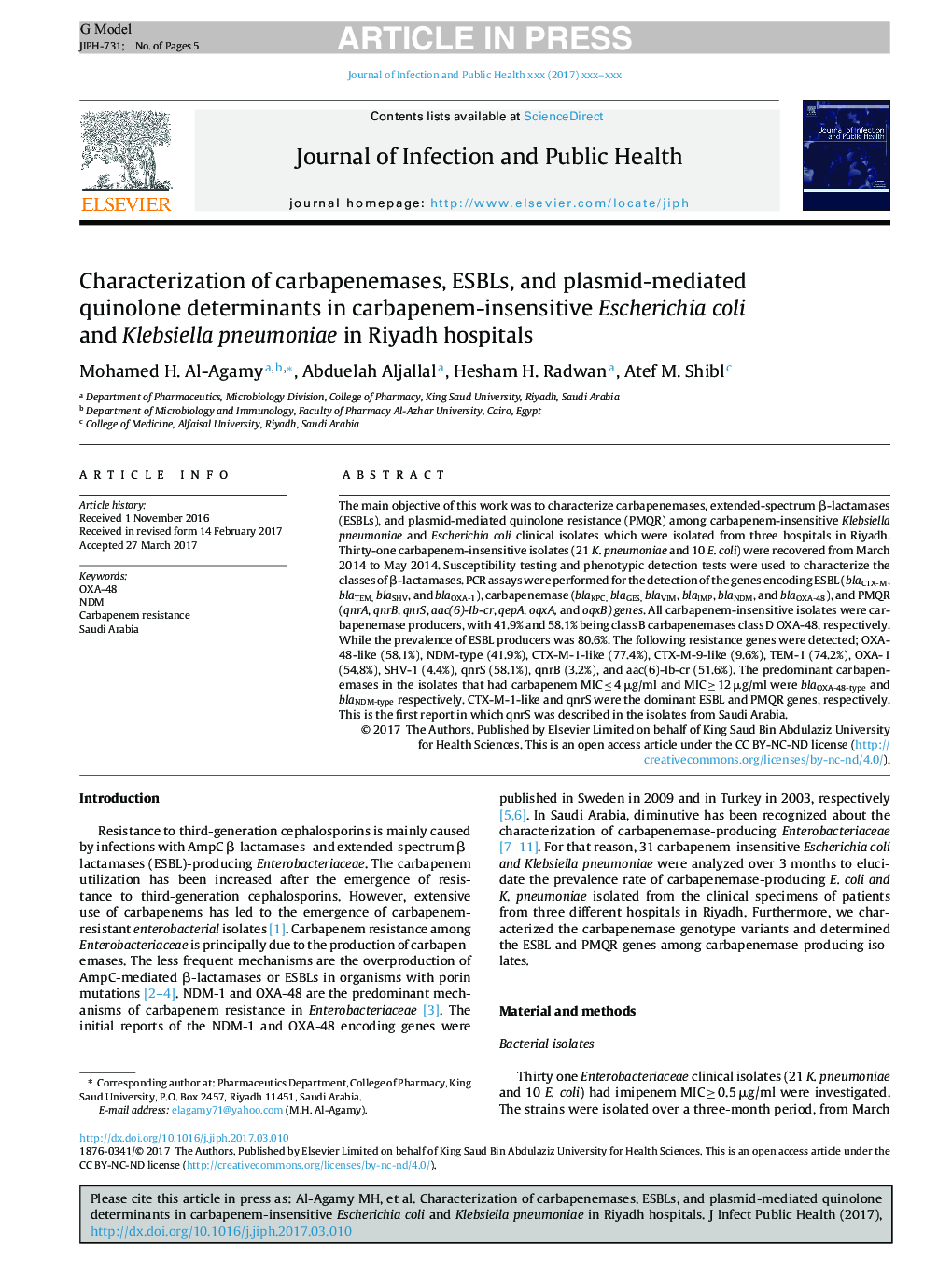| Article ID | Journal | Published Year | Pages | File Type |
|---|---|---|---|---|
| 8746857 | Journal of Infection and Public Health | 2018 | 5 Pages |
Abstract
The main objective of this work was to characterize carbapenemases, extended-spectrum β-lactamases (ESBLs), and plasmid-mediated quinolone resistance (PMQR) among carbapenem-insensitive Klebsiella pneumoniae and Escherichia coli clinical isolates which were isolated from three hospitals in Riyadh. Thirty-one carbapenem-insensitive isolates (21 K. pneumoniae and 10 E. coli) were recovered from March 2014 to May 2014. Susceptibility testing and phenotypic detection tests were used to characterize the classes of β-lactamases. PCR assays were performed for the detection of the genes encoding ESBL (blaCTX-M, blaTEM,blaSHV, and blaOXA-1), carbapenemase (blaKPC,blaGES,blaVIM, blaIMP, blaNDM, and blaOXA-48), and PMQR (qnrA, qnrB, qnrS, aac(6)-Ib-cr, qepA, oqxA, and oqxB) genes. All carbapenem-insensitive isolates were carbapenemase producers, with 41.9% and 58.1% being class B carbapenemases class D OXA-48, respectively. While the prevalence of ESBL producers was 80.6%. The following resistance genes were detected; OXA-48-like (58.1%), NDM-type (41.9%), CTX-M-1-like (77.4%), CTX-M-9-like (9.6%), TEM-1 (74.2%), OXA-1 (54.8%), SHV-1 (4.4%), qnrS (58.1%), qnrB (3.2%), and aac(6)-Ib-cr (51.6%). The predominant carbapenemases in the isolates that had carbapenem MIC â¤Â 4 μg/ml and MIC â¥Â 12 μg/ml were blaOXA-48-type and blaNDM-type respectively. CTX-M-1-like and qnrS were the dominant ESBL and PMQR genes, respectively. This is the first report in which qnrS was described in the isolates from Saudi Arabia.
Related Topics
Health Sciences
Medicine and Dentistry
Infectious Diseases
Authors
Mohamed H. Al-Agamy, Abduelah Aljallal, Hesham H. Radwan, Atef M. Shibl,
